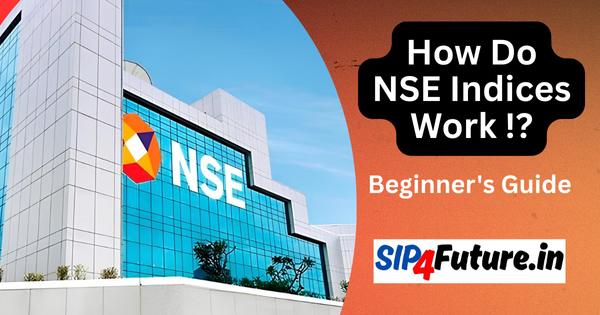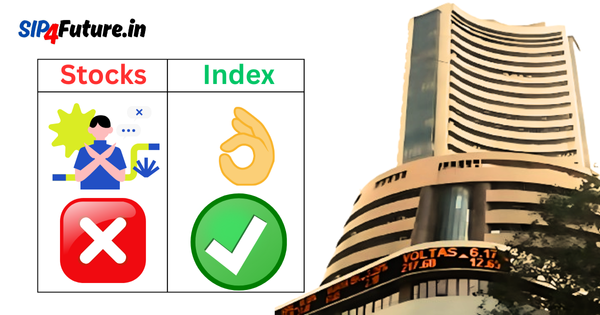The Indian stock market is a dynamic arena, and few companies exemplify this vibrancy as well as Mahindra & Mahindra Limited (M&M). As of May 5, 2025, the Mahindra & Mahindra stock price on the National Stock Exchange (NSE) stands at ₹2979.80, reflecting a positive 1.83% gain for the day. This upward movement aligns with the company’s recently announced financial results for Q4 and FY25, which showcase a remarkable 20% growth in profit after tax (PAT) and revenue. With a consolidated PAT of ₹12,929 crore and revenue of ₹1,59,211 crore for FY25, M&M has solidified its position as a leader in India’s automotive and farm equipment sectors. This article delves into the factors driving the Mahindra & Mahindra stock performance, the sectoral and global influences shaping its trajectory, and what lies ahead for this industrial powerhouse.
What Drives Mahindra & Mahindra Stock Performance?
Mahindra & Mahindra’s success in FY25 is rooted in its diversified business model, spanning automotive, farm equipment, financial services, and more. The company’s ability to navigate challenges like rural demand fluctuations and global economic uncertainties has bolstered investor confidence, as evidenced by the stock’s positive momentum.
Automotive Segment: Powering Growth
The automotive sector, a cornerstone of M&M’s operations, reported an 18% increase in Q4 volumes. This growth is driven by strong demand for utility vehicles (UVs), particularly models like the Scorpio, Thar, and the newly launched XEV 9e electric SUV. According to a Times of India report, M&M’s utility vehicle segment saw domestic sales of 41,424 units in December 2024, up 18% year-on-year, contributing to a total of 69,768 vehicles sold. The company’s focus on electric vehicles (EVs) has also gained traction, with over 3,000 EVs delivered and a six-month waiting period for the XEV 9e, signaling robust consumer interest.
M&M’s strategic capacity expansion plans further support its automotive growth. The company aims to increase its monthly UV production capacity to 64,000 units by the end of FY25 and 72,000 units by FY26, up from the current 49,000 units, as noted in a Financial Express analysis. This expansion, coupled with new model launches like the facelifted Thar and XUV700 planned for 2026, positions M&M to capitalize on India’s growing SUV market.
The farm equipment sector (FES) has been another pillar of M&M’s success, achieving a record market share of 43.3% in FY25. Despite challenges like subdued rural demand and El Niño-related pressures, M&M’s tractor sales have shown resilience. The company raised its tractor industry growth guidance for FY25 to 6-7% from 5%, implying a robust 13-14% growth in the second half of the fiscal year, as highlighted in posts on X. This optimism is driven by a low base, favorable monsoons, and improved trade terms for farmers, according to BNP Paribas.
M&M’s focus on farm machinery, including rotary tillers and harvesters, and its global Centers of Excellence in Turkey, Finland, and Japan, are enhancing its product offerings. These initiatives align with India’s push for agricultural mechanization, supported by government schemes like the Sub-Mission on Agricultural Mechanization, which promotes farm productivity and labor efficiency.
Financial Services and Other Segments
The services segment, led by Mahindra & Mahindra Financial Services Limited, has also contributed to the company’s strong FY25 performance. The financial arm reported a 38.54% jump in net profit to ₹389.42 crore in Q2 FY25, despite a quarterly dip, as per INDmoney. This growth reflects M&M’s ability to leverage its financial services to support rural and semi-urban customers, a critical factor in sustaining demand for its automotive and farm products.
Other segments, including real estate, hospitality, and renewable energy initiatives like solar projects, underscore M&M’s diversified revenue streams. The company’s incorporation of Mahindra Advanced Technologies and an expanded design studio further highlights its commitment to innovation, as reported by INDmoney.
How Do Government Policies Impact Mahindra & Mahindra Stock?
Government policies play a significant role in shaping M&M’s stock performance, particularly in the automotive and farm equipment sectors. India’s push for sustainable mobility and agricultural modernization has created a favorable environment for M&M’s growth.
Electric Vehicle Incentives
The Indian government’s focus on electric mobility, through schemes like the Faster Adoption and Manufacturing of Electric Vehicles (FAME), has bolstered M&M’s EV strategy. Subsidies and tax incentives for EV buyers have driven demand for models like the XEV 9e, while production-linked incentives (PLI) for advanced automotive technologies have supported M&M’s capacity expansion. However, competition from global players like BYD and potential entrants like Tesla, as noted in X posts, could pose challenges. Analysts from Jefferies argue that Tesla’s entry may have limited near-term impact on M&M due to differences in portfolio pricing, but long-term competition remains a concern.
Agricultural Support Schemes
In the farm equipment sector, government initiatives like the Pradhan Mantri Kisan Samman Nidhi (PM-KISAN) and increased minimum support prices (MSP) for crops have boosted rural incomes, indirectly supporting tractor and farm machinery sales. The Agricultural Infrastructure Fund also encourages investments in post-harvest infrastructure, driving demand for M&M’s farm solutions. However, fluctuations in monsoon patterns and global commodity prices, as influenced by El Niño, continue to pose risks to rural demand, as noted in a Moneyworks4me report.
Trade and Tariff Policies
Global trade policies, particularly U.S. tariff decisions, have also impacted M&M’s stock. Reports of a potential pause in U.S. auto tariffs under President Trump, as mentioned in INDmoney, led to a nearly 4% surge in M&M’s stock in April 2025. Such developments highlight the sensitivity of Indian automotive stocks to global trade dynamics, especially for companies like M&M with export markets in over 100 countries.
When Do Global Market Trends Influence Mahindra & Mahindra Stock?
The global market scenario in 2025 presents both opportunities and challenges for M&M. As a multinational corporation, M&M’s stock is influenced by international economic trends, commodity prices, and geopolitical developments.
Global Automotive Trends
The global shift toward electric and sustainable mobility aligns with M&M’s EV investments. The company’s recognition as the only Indian auto company to achieve Dow Jones Sustainability Index (DJSI) world leader status in 2024, as reported by Times of India, enhances its appeal to ESG-focused investors. However, global supply chain disruptions, particularly in semiconductor availability, could constrain M&M’s production capacity. The company’s proactive measures to ramp up capacity and secure supply chains, as outlined in Financial Express, mitigate some of these risks.
Commodity Prices and Rural Demand
Global commodity prices, particularly for steel and fuel, impact M&M’s input costs and profitability. Rising fuel prices in 2025, driven by geopolitical tensions in the Middle East, have increased operational costs for M&M’s automotive and farm equipment segments. Conversely, favorable global agricultural commodity prices, supported by a strong monsoon in India, have bolstered rural demand for tractors, as noted in BNP Paribas. These dynamics underscore the interplay between global markets and M&M’s domestic performance.
Geopolitical and Economic Uncertainties
Geopolitical events, such as India-Pakistan border tensions following the Pahalgam attack in 2025, have introduced volatility in Indian markets, as reported by Business Today. While M&M’s stock has remained resilient, such events could impact investor sentiment. Additionally, global economic slowdown concerns, particularly in the U.S. and China, may affect M&M’s export markets, which account for 22% of its passenger vehicle sales in FY25.
What Are the Financial Highlights of Mahindra & Mahindra in FY25?
M&M’s financial performance in FY25 is a testament to its operational efficiency and strategic foresight. The following table summarizes key financial metrics for Q4 and FY25:
| Metric | Q4 FY25 | FY25 |
|---|---|---|
| Revenue | ₹43,382.95 Cr | ₹1,59,211.00 Cr |
| Profit After Tax (PAT) | ₹3,517.22 Cr | ₹12,929.00 Cr |
| Revenue Growth (YoY) | 20% | 14% |
| PAT Growth (YoY) | 20% | 20% |
| Dividend per Share | ₹25.30 (proposed) | ₹25.30 (final) |
Revenue and Profit Growth
M&M’s consolidated revenue for FY25 reached ₹1,59,211 crore, a 14% increase from the previous year, driven by strong performances in the automotive and farm equipment sectors. Q4 revenue grew by 20% to ₹43,382.95 crore, reflecting robust demand and operational scalability. The PAT for FY25 stood at ₹12,929 crore, up 20%, with Q4 contributing ₹3,517.22 crore. These figures align with analyst expectations, as per Moneycontrol, which predicted double-digit growth in net profit and revenue for Q4.
M&M’s board recommended a final dividend of ₹25.30 per share, a 20% increase from the previous year’s ₹21.10, signaling confidence in sustained profitability. This move is likely to enhance shareholder value, particularly for long-term investors, as noted in Value Research.
Valuation Metrics
As of May 2, 2025, M&M’s valuation metrics provide insight into its market positioning:
| Metric | Value |
|---|---|
| Market Cap | ₹3,64,204.72 Cr |
| P/E Ratio | 29.36 |
| P/B Ratio | 5.15 |
| 52-Week High/Low | ₹3,270.95 / ₹2,073.05 |
The P/E ratio of 29.36, slightly above the sectoral median of 26.58, indicates a premium valuation driven by strong growth prospects. The P/B ratio of 5.15 reflects investor confidence in M&M’s asset base and future earnings potential, as per Business Today.
How Does Mahindra & Mahindra Compare to Peers?
M&M’s performance stands out among its peers in the Indian automotive sector, including Maruti Suzuki, Tata Motors, and Hyundai Motor India. The following table compares key metrics:
| Company | Market Cap (₹ Cr) | P/E Ratio | Revenue Growth (FY25) | PAT Growth (FY25) |
|---|---|---|---|---|
| Mahindra & Mahindra | 3,64,204.72 | 29.36 | 14% | 20% |
| Maruti Suzuki | 3,80,000 (approx.) | 27.50 | 10% | 15% |
| Tata Motors | 3,50,000 (approx.) | 25.80 | 12% | 18% |
| Hyundai Motor India | 1,80,000 (approx.) | 28.10 | 8% | 12% |
M&M’s superior PAT growth and market share gains in the tractor segment give it an edge, though Maruti Suzuki leads in market capitalization due to its dominance in passenger cars. Tata Motors’ focus on EVs poses competition, but M&M’s diversified portfolio mitigates risks, as noted in Moneycontrol.
What Lies Ahead for Mahindra & Mahindra Stock?
Analysts remain optimistic about M&M’s future, driven by its strategic investments and market leadership. The following table summarizes target prices from leading research firms as of May 2025:
| Research Firm | Target Price (₹) | Recommendation |
|---|---|---|
| Jefferies | 4,075 | Buy |
| BNP Paribas | 3,850 | Buy |
| ICICI Securities | 3,600 | Add |
| Kotak Securities | 3,500 | Buy |
Historical Returns
M&M has delivered strong returns over the years, making it a favorite among investors:
| Time Period | Return (%) |
|---|---|
| 1 Year (May 2024–May 2025) | 51.91 |
| 3 Years (2022–2025) | 47.68 |
| 5 Years (2020–2025) | 120.45 |
These returns, as reported by ICICI Direct, reflect M&M’s resilience and growth potential, despite market volatility.
Future Outlook
M&M’s planned investments of ₹270 billion in automotive, ₹50 billion in farm equipment, and ₹50 billion in services over FY25–27, as per Financial Express, signal robust growth prospects. The company’s focus on EVs, with seven BEV models planned by 2030, and its leadership in the tractor market position it to benefit from India’s economic growth and sustainability trends. However, challenges like global competition, supply chain constraints, and rural demand fluctuations warrant caution.
Conclusion
Mahindra & Mahindra stock has emerged as a standout performer in 2025, driven by strong financial results, strategic expansions, and favorable government policies. With a 20% growth in profit and revenue, a record market share in tractors, and a promising EV pipeline, M&M is well-positioned to navigate domestic and global market dynamics. While challenges like global competition and commodity price volatility persist, the company’s diversified portfolio and proactive strategies inspire confidence. Investors eyeing M&M stock should consider its long-term growth potential, supported by analyst optimism and historical returns.
Disclaimer: The information provided in this article is for educational purposes only and does not constitute financial advice. Investing in stocks involves risks, and past performance is not indicative of future results. Readers are advised to conduct thorough research and consult with qualified financial advisors before making investment decisions. The author and publisher are not responsible for any losses or damages resulting from reliance on this information.




